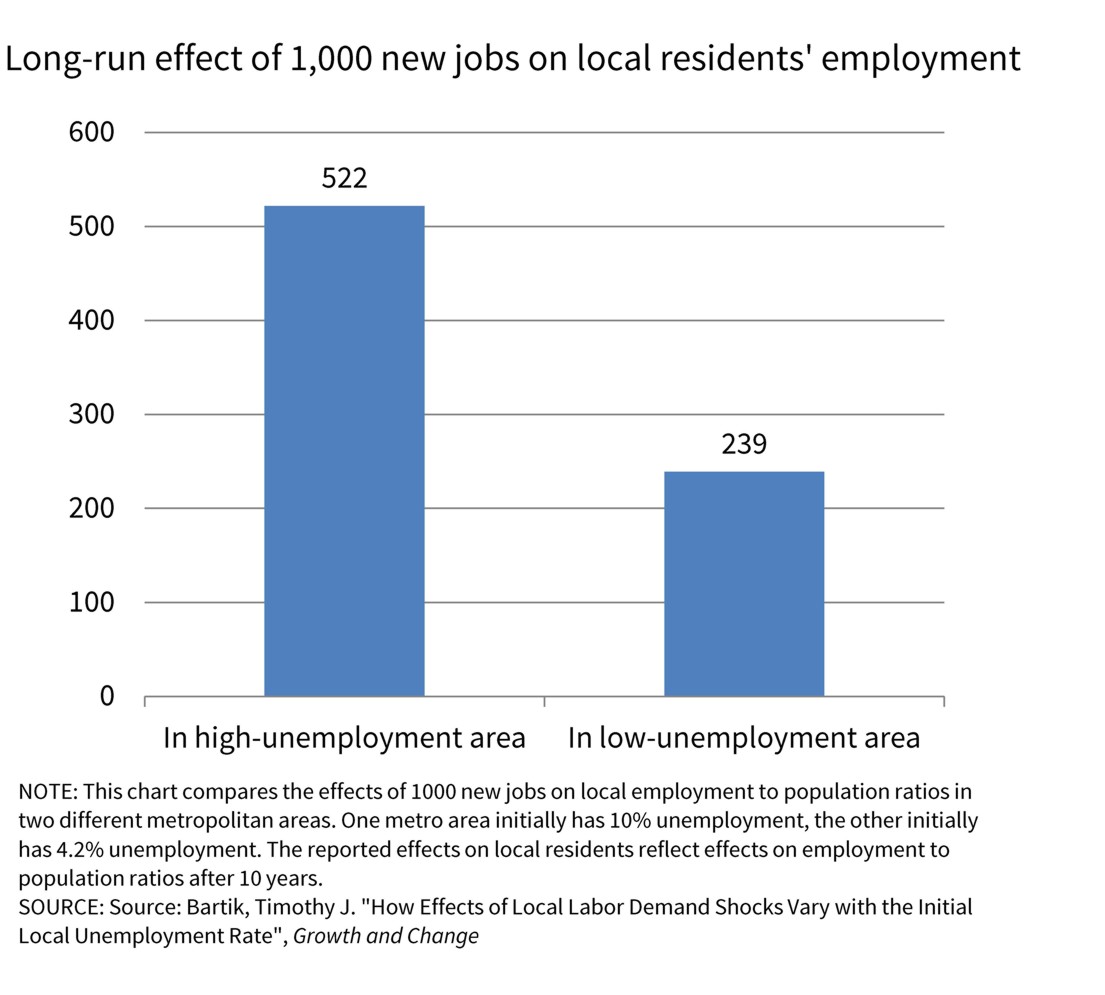
What are the real effects on employment from government incentives intended to boost job growth? New research from Upjohn’s Tim Bartik shows it depends on the starting point: the local unemployment rate.
State and local governments often rely on economic development policies—like employer tax credits, customized job training and infrastructure—to create and retain jobs. This new research shows that such incentives have much greater benefits in local economies with high unemployment rates.
Why? It depends on who gets hired. New local jobs go either to local residents or to in-migrants. If the new jobs go to local residents, local residents have higher earnings, and local government finances improve. If the new jobs go to in-migrants, local governments have higher costs, and residents face higher prices.
column chartBy estimating job growth’s effects on local employment-to-population ratios, we can ballpark the number of jobs going to locals versus in-migrants. Consider two local metropolitan areas, one that starts out with 10 percent unemployment, the other with 4 percent unemployment. Employment-to-population ratios indicate that in the high-unemployment area, 1000 new jobs will eventually lead to about 500 new jobs for local residents, with the other 500 going to in-migrants. In contrast, in the low- unemployment area, 1000 new jobs will only increase local residents’ employment by 200 jobs over the long run.
Based on these findings, the pursuit of job growth should be more aggressive in high-unemployment areas than in low-unemployment areas. Federal and state economic development policies should favor high-unemployment labor markets, where the jobs are not only most needed, but provide the greatest economic benefits.

